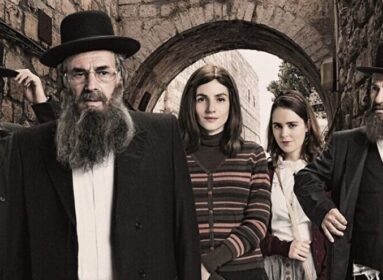 Reaching out to Jewish 20s and 30s
Reaching out to Jewish 20s and 30s
By Cindy Mindell
Last month, Jewish community professionals from around the Northeast gathered to discuss ways to more effectively engage young Jewish adults. Convened by the Birthright Israel Foundation, this was the first regional conference of the NEXTwork, hosted by NEXT: A Division of Birthright Israel.
NEXT was created as a follow-up to Birthright Israel, which has brought tens of thousands of young American (and other) Jews to Israel for an intensive bonding experience with the land and people. The hope is that participants engage more Jewishly once they come home. Unmoored from their Birthright tour bus and peers, many were finding it difficult to do so, outside traditional Jewish organizations that they may not affiliate with. Birthright responded with a new initiative for its alumni, summed up by the tagline, “I’m back. What’s next?”
“You’re looking at 250,000 Birthright-Israel alumni in the U.S. who have been on a transformative trip and are interested in Jewish engagement and opportunities,” says Dan Fast, Northeast regional director of NEXT. “There is both the need and opportunity to build on that experience and investment made by the Jewish community to more effectively engage young adults in Jewish life throughout the country. To build this kind of vibrant ‘ecosystem,’ you need a skilled, prepared, and effective network of engagers to better deepen and broaden the Jewish experience of young adults. Investing in the engagers as well as the participants is the direction to go.”
The question “What’s next?” is certainly not new to Jewish community professionals, who have long been in the business of responding to the needs of various age groups that emerge along the Jewish lifecycle. There is established programming for early childhood, school age, and b’nai mitzvah demographics, as well as high school and college students, and again for young families and beyond. It’s that post-college gap that is now drawing the most attention and effort.
“This demographic is very different than it was 20 or 30 years ago,” says Leah Schechter, director of Singles Outreach at Jewish Family Service in Stamford. “When they were my age, my parents owned a house; some of their peers were single and owning houses. But most of my generation isn’t in that position, so we’re not paying dues to things or joining things. Because Jewish communal institutions function like businesses, if you have two potential customers and one won’t pay you, where will you put your energy?”
Many established Jewish institutions that run on this model aren’t nimble enough to incorporate the demographic.
“Being creative and able to figure out how to reach 20s and 30s is what needs to be done, but a synagogue needs to pay its bills and its clergy, so its motive is to support its membership,” says Schechter, who oversees JTT (Jewish Twenties and Thirties) and JFF (Jewish Forties and Fifties). Because JTT is affiliated with a community-wide agency that serves a broad region, it can be both neutral and inclusive.
Both JTT and JFF are outgrowths of a program funded by a married couple who first met at a program for young adults at the Stamford JCC. As a way to return the favor to the community, the couple established the Helen Marksamer Young Singles Group Fund in 2008, administered by Jewish Family Service in Stamford. The initiative was created as a grants program to support and publicize young-adult programming at synagogues and Jewish organizations in the JFS catchment area. But the steering committee set up to guide the use of the fund discovered that many of those institutions were not prepared to answer the needs of the target demographic. Since Schechter joined the JFS staff in 2010, the agency has been running its own programs for 20s and 30s and partnering with organizations who are doing the same.
From both a professional and personal perspective, Schechter represents the demographic that Jewish institutions are scrambling to engage. Her work focuses on this new reality: If young Jewish adults aren’t following their grandparents’ and parents’ routes into the community, they must be met and engaged where they are – happy hours, holiday parties, communal Shabbat dinners.
While many of the young adults Schechter meets are involved with the Stamford JCC or a synagogue, and give to a Jewish Federation, “this is a population that doesn’t always fit well into our suburban community organizations,” Schechter says. “It’s very different in the city, but suburbs are usually meant for families and when you’re not in that demographic, you’re in a needy situation.”
JTT is based on a simple goal: to get 20s and 30s together. “If it’s around a Jewish program or holiday, that’s great, but our goal has always been to Jewish young adults together, period. All the extra stuff is a bonus.”
The key to engaging young adults is to combine the physical and spiritual, says 30-something Chanie Stone, who founded the Norwalk-based Young Jewish Professionals, CT (YJP) in 2009 with her husband, Rabbi Levi Stone. YJP is funded thorugh the Schneerson Center for Jewish Life, CT. “We noticed that the guests around our Shabbat table were primarily from our own age group, and we thought that perhaps there was a need for programming for this younger demographic,” she says.
YJP’s first big event was a Chanukah jazz party at a trendy South Norwalk bar, and the program has grown ever since. The monthly Shabbat dinner is still a popular mainstay – “we have to expand our dining room,” Stone says – along with “tea and Torah” for women, a weekly men’s learning group, nature hikes, happy hours, and holiday celebrations.
“All our events have great venues, food, and music, and there’s also a spiritual or learning aspect,” Stone says. “It’s important for young people to connect to an experience, but also to each other. They come to an event and see that there are so many people like them living in the community.”
Among the Jewish professionals programming for this age group, the more traditional terms describing Jewish involvement like “affiliation” or “membership” don’t come up much. The vocabulary and approach center on the “Jewish journey” of the 20- or 30-something, and because there are so many potential stops along the way, Jewish professionals can be most effective if they are networked.
“To support folks in their 20s who are on the ‘odyssey years’ of their journey, there needs to be a much better system of these organizations communicating with each other, especially since it’s common for young adults to pop from one to the other,” says Sarah Chandler, who participated in the NEXTwork conference.
Chandler is director of Earth Based Spiritual Practice at Hazon, a non-profit organization that works to create a healthier and more sustainable Jewish community and world at large. Chandler is based at the Isabella Freedman Jewish Retreat Center in Falls Village, Conn., home of the Adamah Farm & Fellowship, the largest, most established Jewish educational farm in North America; the three-month fellowship is a leadership-training program for Jewish adults ages 20 to 32.
“The way young adults structure their lives is not like folks in their 50s; they’re transient and trying new things to discover themselves, and we want to support them as they move around in that process,” she says. “Those of us in leadership positions need different skills to work with different constituencies and needs – areas like mentorship, Israel, pluralism. People who do the Adamah Fellowship want to go off and create community. So for example, if someone moves to New York or Chicago or Boston to get a job, I want them to know about the Jewish opportunities there.”

Members of Jewish Twenties and Thirties (JTT) enjoy a Lag B’Omer bonfire last week, held on the grounds of Temple Sinai in Stamford.
Adamah partners with Moishe House West Hartford, an actual home staffed by four young Jewish professionals who live there and create programming for fellow 20s and 30s in the community. “MoHo WeHa,” as it’s commonly referred to, is part of a global network of Moishe Houses established to serve this demographic with “low-barrier” Jewish programming, funded through the Moishe Foundation and local Jewish organizations. The West Hartford Moishe House is a member of the Adamah Farm Community Sponsored Agriculture program, which provides fresh produce to Jewish Local Greens in West Hartford, and brings young adults to Adamah Farm work-days and retreats.
“Food activism is a good way to build ties and connections,” Chandler says of Adamah’s impact, especially among young adults who are not affiliated with traditional Jewish institutions. “Instead of going up to someone and saying, ‘What’s your connection to God, prayer, Hebrew, and the Bible?’ I can ask, ‘Have you ever heard of sustainable gefilte fish?’ Everyone eats. All synagogues, JCCs, and Jewish summer camps serve food and have members who prepare and serve food. Now you have a conversation.”
So, for example, after completing the Adamah Fellowship, alumni have gone on to create programs and businesses in other communities, including Gefilteria, a sustainably sourced gefilte fish company in Brooklyn; Ganei Beantown: Beantown Jewish Gardens; and Grow and Behold Kosher Pastured Meats.
The importance of engaging 20s and 30s may be obvious, but Jewish professionals must have a clear sense of that mission if they are to be successful.
“We’re trying to reach out to these younger professionals – married and single – because a lot of people want to connect with other Jewish peers,” says Jennifer Gelband of the JCC of Greater New Haven. “There are a lot of transplants in New Haven who aren’t affiliated with any college or synagogue and don’t have any family here so they don’t have connections to the community. We want to reach out to them and provide fun, educational, social programs in which people feel welcome and can connect with each other and find Jewish friendships. We’re trying to build and support a community.”
Though 20s and 30s, as a group, may seem a little disorganized by traditional measures – let’s call it “differently organized” – the community at large can take comfort in its young-adult demographic.
“The Pew survey [A Portrait of Jewish Americans, October 2013] says that most of us are unaffiliated, but I don’t believe that,” says Schechter. “We’re just affiliating in different ways.”
Exhibit A: Wilton native and Stamford resident Arielle Wein, president of YJP. “Growing up and being in an area with not a lot of Jews, when I came back to the area, I wanted to connect with my background and didn’t know where to go,” says the 20-something public school teacher, who discovered YJP through Meetup.com. “I went to an event and the Stones were so welcoming and brought a good mix of people together. I never felt out of place and that was the reason I kept going back.”
For Wein, YJP became an important part of her transition from college to adult life. “When you’re in college, you have Jewish campus life and organizations like Hillel and Chabad to get you involved, and once you’re married and have kids, you’re involved in a synagogue community,” she says. “After college is really when you start to think about Jewish life and meaning, and it’s when my Jewish identity became more important to me. I had just gotten out of a longtime relationship with a non-Jewish boyfriend. With YJP, I had a place to lean on and start interacting with Jewish peers and dating Jewish guys.”
Wein met her now-fiance on JDate two years ago; their wedding is planned for this summer. But the shidduch was a bonus: Wein got and stayed involved in YJP in order to create community. “I’ve made a lot of my friends from this group,” she says. “People are always looking for others with a common interest and being Jewish is important to me. I’ve been able to connect with others who find it important. For us as a couple, meeting other couples is nice too because we’re not part of a temple community. So now we have other Jewish couples to go out to dinner with.”
Just because young adults may not be visible within the walls of our traditional Jewish institutions doesn’t mean that they’re not living rich Jewish lives. It’s just that those same institutions, and the Jewish community at large, must evolve to be more creative when addressing needs of 20s and 30s.
“We’re acknowledging where people are in their life phase,” says Dan Fast of the NEXTwork. “As Jewish community professionals, we’re looking to build relationships that can seed Jewish participation now and later. Because those needs change over time, the Jewish community will have the opportunity to address them as they come up. Engagement work is a long game.”
Hand-wringers, take heart. This is the new face of Jewish continuity.
This article touches on just a few of the programs for Connecticut Jewish young adults. To find out about programs and groups in your area, contact your local Federation, JCC, synagogue or JFS.
Comments? email cindym@jewishledger.com.







 Southern New England Jewish Ledger
Southern New England Jewish Ledger
















